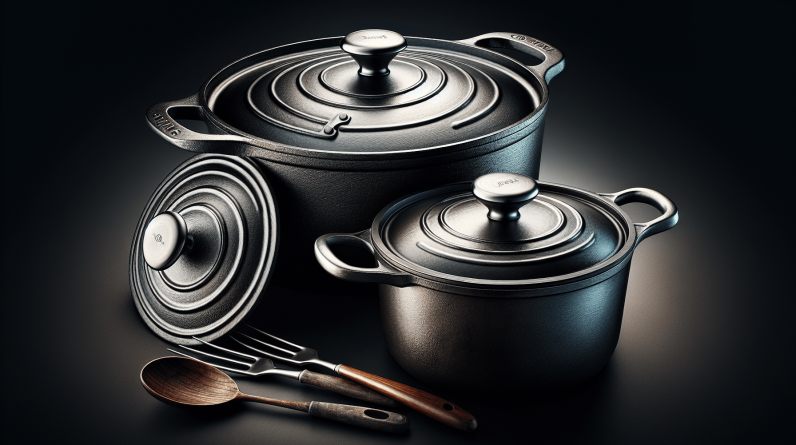In this article, we will discuss the important factors to consider when choosing a kitchen table that suits your space. We will explore the various sizes and shapes available, as well as the materials that work best for different lifestyles. Additionally, we will provide tips on how to measure your space effectively so that you can find a table that fits perfectly. By the end of this article, you will have a clear understanding of how to choose the right kitchen table for your space.

Determining the Size of the Kitchen Table
Measuring the available space
When it comes to choosing the right kitchen table for your space, the first step is to measure the available space. This will help you determine the maximum dimensions that your table can be without overcrowding the area. Start by measuring the length and width of the space where you plan to place the table. Take into consideration any other furniture or appliances that will be nearby, such as cabinets or kitchen islands.
Considering the number of people
Next, you’ll want to consider the number of people who will regularly be using the kitchen table. This will help you determine the size and seating capacity that you’ll need. If you have a small family or live alone, a smaller table with seating for two to four people may be sufficient. On the other hand, if you frequently entertain guests or have a large family, you may need a larger table with seating for six or more.
Determining the ideal shape and dimensions
Once you have determined the available space and the number of people to accommodate, you can consider the ideal shape and dimensions for your kitchen table. There are several common shapes to choose from, including rectangular, square, round, and oval. Rectangular tables are typically the most versatile, as they can fit into various kitchen layouts. Square tables are ideal for smaller spaces or for creating a more intimate dining experience. Round and oval tables are great for promoting conversation and can help create a more casual dining atmosphere.
When considering the dimensions of your table, be sure to leave enough space for people to comfortably move around it. A good rule of thumb is to allow at least 36 inches of clearance between the table and any walls or other furniture. This will ensure that everyone has enough room to sit and move around without feeling cramped.
Choosing the Material and Style
Exploring different materials
When it comes to the material of your kitchen table, there are numerous options to choose from. The most common materials include wood, glass, metal, and laminate. Each material has its own unique characteristics and benefits. Wooden tables, for example, are known for their durability and natural beauty. Glass tables, on the other hand, can create a sleek and modern look. Metal tables are often more contemporary in style, while laminate tables are a budget-friendly option.
Considering durability and maintenance
When choosing the material for your kitchen table, it’s important to consider durability and maintenance. If you have young children or pets, you may want to opt for a material that is resistant to scratches and stains. Additionally, consider how easy the table will be to clean and maintain. Some materials, such as wood, may require regular polishing or refinishing to keep them looking their best. Others, like laminate or glass, may be easier to clean with just a simple wipe down.
Matching the style with the kitchen decor
In addition to considering the material, you’ll also want to consider the style of your kitchen table and how it will fit in with the overall decor of your kitchen. If you have a traditional or farmhouse-style kitchen, a wooden table with a rustic finish may be the perfect choice. For a more contemporary or modern kitchen, a glass or metal table with clean lines and sleek design elements may be more fitting. Ultimately, you’ll want to choose a table that complements the existing style of your kitchen and creates a cohesive and visually pleasing space.

Determining the Functionality
Considering the table’s role in daily activities
When choosing a kitchen table, it’s important to consider its functionality and how it will be used on a daily basis. Think about the main activities that will take place at the table, such as dining, homework or work, or even socializing with guests. This will help you determine the features and design elements that are most important to you. For example, if you plan to use the table for meals and family gatherings, you may want a table with a leaf or extension to accommodate larger groups. If you anticipate using the table for work or hobbies, you may want a table with ample surface space.
Evaluating additional features such as storage
In addition to its primary function, consider whether you would like your kitchen table to have any additional features, such as built-in storage. Many tables come with drawers or shelves underneath that can be used to store placemats, napkins, or other dining essentials. Others may have built-in wine racks or storage compartments for keeping bottles and glasses organized. These additional features can help maximize the functionality of your table and provide convenient storage solutions.
Determining the usage frequency
Another factor to consider when choosing a kitchen table is the frequency of use. If you anticipate using the table on a daily basis, you’ll want to choose a table that is durable and can withstand regular wear and tear. Look for tables made from quality materials that are known for their durability, such as solid wood or stainless steel. On the other hand, if you anticipate using the table less frequently or for special occasions only, you may be able to prioritize aesthetics and choose a table with a more delicate design.
Considering Seating Options
Deciding between chairs or benches
When it comes to seating options for your kitchen table, you’ll need to decide between chairs or benches. Chairs are a classic choice and provide individual seating for each person. They can be upholstered or have wooden seats, depending on your preference and comfort level. Benches, on the other hand, offer a more casual and communal dining experience. They can often fit more people in a smaller space and are a great option for families with children, as they can easily accommodate multiple little ones.
Determining the number of seats needed
To determine the number of seats you’ll need for your kitchen table, consider the number of people in your household as well as any guests you anticipate having. It’s always good to have a few extra seats for unexpected guests or for when you’re entertaining. If you have limited space, you may want to consider benches or chairs that can be easily stacked or folded for storage when not in use. Remember to consider the size and dimensions of the chairs or benches when choosing your table, ensuring that there is enough room for everyone to sit comfortably.
Evaluating comfort and ergonomics
When choosing seating for your kitchen table, it’s important to prioritize comfort and ergonomics. After all, you and your family or guests will be spending a significant amount of time sitting at the table. Look for chairs or benches with supportive backs and cushioned seats that will provide comfort during lengthy meals or gatherings. Additionally, consider the height of the chairs or benches in relation to the height of the table. You’ll want to ensure that there is enough legroom and that everyone can sit comfortably without feeling cramped.

Taking into Account the Budget
Setting a budget range
Before you begin your search for the perfect kitchen table, it’s important to set a budget range. This will help you narrow down your options and prevent overspending. Consider how much you are comfortable spending on a table and stick to that budget when exploring different options.
Exploring different price points
Once you have set a budget range, you can start exploring different price points and styles within that range. Keep in mind that the price of a kitchen table can vary greatly depending on factors such as the material, size, and brand. While it may be tempting to go for the cheapest option available, it’s important to also consider the quality and durability of the table. Oftentimes, investing a little more in a higher-quality table can save you money in the long run by preventing the need for frequent replacements or repairs.
Considering long-term investment
When setting your budget and exploring different price points, consider the kitchen table as a long-term investment. A high-quality table made from durable materials may cost more upfront, but it is likely to last longer and require less maintenance and repair. On the other hand, a cheaper table made from lower-quality materials may need to be replaced sooner, resulting in additional costs down the line. By considering the long-term value and durability of the table, you can make a more informed decision and choose a table that will stand the test of time.
Researching Brands and Reviews
Identifying reputable brands
When it comes to purchasing a kitchen table, it’s always a good idea to research different brands and identify reputable ones. Look for brands that have a history of producing high-quality furniture and that have positive reviews from customers. Reputable brands are more likely to use quality materials and have excellent customer service, which can be beneficial if you encounter any issues or need assistance after your purchase.
Reading customer reviews and ratings
In addition to researching brands, reading customer reviews and ratings can provide valuable insights into the quality and durability of a kitchen table. Look for reviews that mention the table’s construction, materials, and overall satisfaction. Keep in mind that while one or two negative reviews may be expected, an overwhelming number of negative reviews should be a red flag and may indicate poor quality or a lack of customer satisfaction.
Considering warranty and customer support
Lastly, when researching brands and reviews, it’s important to consider the warranty and customer support offered by the manufacturer. A good warranty can provide peace of mind and protect you in case of any defects or issues with the table. Look for brands that offer a comprehensive warranty and have a reputation for excellent customer support. This way, you can be confident that you will receive assistance if you encounter any problems with your purchase.

Considering Maintenance and Cleaning
Evaluating the ease of cleaning the table
When choosing a kitchen table, it’s important to consider the ease of cleaning and maintenance. Kitchen tables are prone to spills and messes, so it’s important to choose a table that can be easily cleaned. Some materials, such as laminate or glass, can be wiped clean with a simple damp cloth. Others, such as wood, may require more frequent cleaning and use of specialized cleaners. Consider your cleaning preferences and lifestyle when choosing the material of your table, and ensure that you are comfortable with the maintenance requirements.
Considering the maintenance requirements of different materials
Different materials have different maintenance requirements, so it’s important to consider this when choosing your kitchen table. For example, wooden tables may need to be periodically polished or oiled to keep them looking their best. Metal tables may require occasional polishing or preventative measures to avoid scratches or tarnishing. Glass tables may need to be cleaned more frequently to avoid smudges or fingerprints. Consider the time and effort you are willing to put into maintaining your table, and choose a material that suits your lifestyle.
Exploring stain-resistant options
If you have young children or frequently entertain guests, you may want to consider choosing a table with stain-resistant properties. Some materials, such as laminate or certain types of glass, are inherently more resistant to stains and spills. Additionally, there are various treatments and finishes available that can help protect your table from stains and make it easier to clean. Be sure to inquire about these options when shopping for your kitchen table to ensure that you choose a table that will withstand the inevitable spills and messes that can occur in a busy kitchen.
Evaluating the Aesthetic Appeal
Matching the table with the kitchen’s overall theme
As one of the focal points in your kitchen, the aesthetics of your kitchen table are important. Consider how the table will fit in with the overall theme and style of your kitchen. If you have a farmhouse-style kitchen, for example, a wooden table with a distressed finish may be the perfect complement. For a more modern or minimalistic kitchen, a sleek glass or metal table may be more fitting. Pay attention to the color palette, finishes, and design elements in your kitchen, and choose a table that reflects and enhances the overall aesthetic.
Exploring different design options
In addition to considering the overall theme of your kitchen, it’s also important to explore different design options when choosing a kitchen table. From traditional to contemporary, there are countless design options to choose from. Consider the shape, legs, and surface of the table, as well as any unique design features such as inlays or carvings. Take your time to browse different styles and designs and choose a table that speaks to your personal style and taste.
Considering the visual impact of the table
Lastly, when evaluating the aesthetic appeal of a kitchen table, consider its visual impact in the space. A table that is too large or too small can disrupt the balance and flow of the kitchen. Similarly, a table that is too plain or uninspiring can feel dull in an otherwise vibrant space. Pay attention to the scale and proportion of the table in relation to the surrounding elements, and choose a table that makes a statement while still fitting harmoniously into the overall design.

Testing Durability and Stability
Checking the sturdiness of the table
Before making a final decision, it’s important to physically check the sturdiness and stability of the table. Inspect the joints and connections to ensure that they are secure and well-built. Gently push on the table to see if it wobbles or feels unstable. Remember that a kitchen table will be used regularly for various activities, so it’s important to choose one that can withstand the daily wear and tear.
Evaluating the weight capacity
In addition to sturdiness, consider the weight capacity of the table. This is particularly important if you plan to use the table for heavy items or if it will be frequently used by multiple people. Ensure that the table is rated to support the weight that you anticipate placing on it. Most reputable manufacturers will provide weight capacity information, so be sure to check this before making a purchase.
Considering the table’s construction and materials
When evaluating the durability and stability of a kitchen table, consider its construction and the materials used. Solid wood tables are generally considered to be the most durable and long-lasting, as they can withstand heavy use and have a timeless appeal. However, other materials such as metal or laminate can also provide durability and stability, especially when they are well-constructed. Take the time to physically examine the table, and if possible, sit at it to test its stability and comfort.
Conclusion
Choosing the right kitchen table for your space is a process that requires careful consideration of various factors. By measuring the available space, considering the number of people, determining the ideal shape and dimensions, and selecting the appropriate material and style, you can find a table that fits both your practical needs and aesthetic preferences. Additionally, evaluating the functionality, seating options, budget, brands and reviews, maintenance and cleaning requirements, and the overall visual appeal will help you make an informed decision. Remember to test the table’s durability and stability, ensuring that it can withstand the demands of daily use. Ultimately, a well-chosen kitchen table will enhance the functionality and aesthetics of your space and provide a gathering place for meals, conversations, and memories for years to come.










